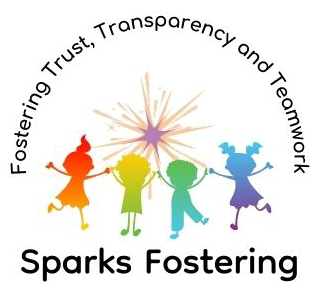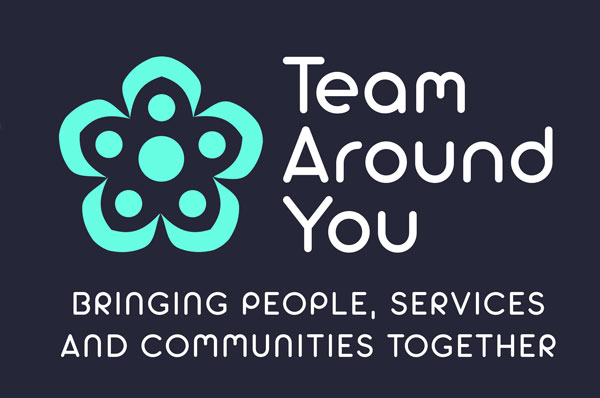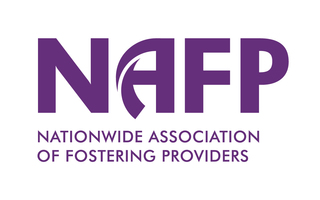Caring For Children
De-Escalation and Restraint
Managing Emotions
Some children in foster care struggle to manage their emotions and behaviour; this is perfectly understandable considering the trauma and loss they have suffered before they entered foster care and/or as a result of being moved into a fostering home. Some children express their emotional distress with aggressive behaviour, others ‘internalise’ their feelings (which means that they struggle to express themselves and may present as ‘cold’ and uncaring), however, many children in foster care are relatively well settled and do not struggle significantly with their emotional regulation. This policy will outline how foster carers (and social workers and the team around the child) can support children who express difficult feelings with aggressive and challenging behaviour.

Challenging behaviour is an expression of unmet need: Challenging behaviour should be considered to be an expression of sadness, isolation, low self-esteem, or other difficult emotions. Foster carers of children who present challenging behaviour should primarily aim to improve the child’s emotional wellbeing.
Knowing the child
Matching appropriately
If it is known that a child has a history of offending (or otherwise challenging) behaviour or is at risk of challenging behaviour, the child will be matched to appropriately experienced and trained foster parents.
If it is known before matching that the child may need to be supported with approved restraint methods, the child would only be matched with trained foster carers. If it becomes known that restraint may be needed whilst the placement in ongoing, appropriate training and support will be provided to the foster carer/s and child/ren.
Child’s wishes and feelings
Children appreciate transparency, trust and being heard; this is particularly the case for children in foster care, who have had many significant decisions made on their behalf, potentially leading to a sense of disempowerment, and not being heard.
It is also important to involve children in decision making because the children need to develop good decision making skills, which is vital for their development, safety and independent living skills.
Some adults may feel uncomfortable discussing challenging behaviour with children, especially if the children are new to the fostering home and they haven’t yet built up a strong relationship. The discomfort is often due to fear of upsetting the child, fear of unsettling the child (leading to disruptive behaviour), or due to lack of confidence about having the conversation. Foster carers who are looking after children who present with challenging behaviour (or may in the future) should be able to discuss the topic with confidence, and from the position that the child shouldn’t be embarrassed, that a fresh start can be made at any time, and that the foster carers are determined to help the child feel secure, stable, optimistic and confident (thereby minimising the risk of challenging behaviour). Social workers can support foster carers to have these discussions with the children.
If physical restraint is being considered, this should be discussed with the child as soon as possible. Children who have experienced restraint before may offer suggestions or alternatives.
The children should be given an opportunity to talk about their experience of restraint, what support was offered after restraint and their feelings about it. Many children who have experienced restraint understand that it is necessary and used as a last resort.
If the child hasn’t experienced restraint previously, but it seems that this may be a possibility in the future, this should be discussed with the child and the child should be clear about what to expect. It should be explained that restraint would only be used to prevent harm to the child, harm to others or significant harm to property. The child should be assured that they will not be unsafe or in pain.
Developmentally appropriate behaviour
Making choices, taking risks and learning from failures is part of growing up. Like their peers, looked after children need to be supported to learn through experience. When the choices they make are poor or the risks unacceptable, foster parents should be able to talk to them about their situation and help them to understand and manage their own behaviour. Whilst it is normal for foster parents, like parents, to want to avoid unnecessary risks, excessive caution is unhelpful. Children and young people need to be exposed to some risks, proportionate to their age and understanding.
Furthermore, children in care should experience the patience, forgiveness and generosity of spirit that every valued child should experience when they make mistakes.
Additional needs
Staff and foster carers are expected to consider the child’s development and abilities when setting expectations for the child. Some children struggle with their behaviour because their development has been delayed as a consequence of abuse, and for other children their development is delayed due to cognitive disability. A child’s individual needs must always be taken into consideration when making decisions about how to support their behaviour.
Medication
Children can only be given medication which is approved by the children’s social worker and/or medical professionals. Also, the medication can only be given in the circumstances specified by medical professionals. If the dosage and frequency of the medication is at the foster carer’s discretion, the amount given should be in the best interests of the child and the justification for each use should be recorded on the child’s medical record.
The use of medication should be explained to the child in a manner that they can understand (as far as they have capacity to understand). Consent should be sought at every administration unless there is a serious risk to the child’s health without the medication.
Diversity
Other factors to consider include how well the child’s identity needs (including religious, cultural, ethnic and linguistic background) are met – if the child’s identity needs aren’t met, this may impact on the child’s sense of wellbeing and their behaviour.
Any medication provided should not conflict with the child’s religious or cultural beliefs, unless there is serious risk to life (medical and social work advice is to be sought for clarification when this is possible).
Promoting positive behaviour
Building attachments
While the child is in the fostering placement, the best source of encouragement for the child to improve and/or maintain positive behaviour is their attachment to the foster carer and the role modelling by the foster parent/s.
Strong attachments, stability, feeling heard and having good self-esteem are the foundations of positive behaviour.
Foster carers who have established a strong positive attachment with children in their care are much more likely to be able to support a child to recover from distress and to optimise the child’s potential. Foster carers who struggle with their attachment and affection towards children in their care are expected to share this information with their supervising social worker so that the foster carer and the children in their care can be supported to build a strong, therapeutic and appropriate relationship with each other.
The attachments should help the child/ren to feel valued, heard, and safe. Younger children in particular develop good self-esteem by pleasing the adults in their life; all adults in the children’s lives should be actively praising the child/ren regularly (and sincerely). Children who are struggling to manage their behaviour have a greater need for encouragement and support.
Foster carers are expected to work towards building a ‘secure base’ for the children in their care. This can be done by being consistently available (helping the child to trust), being sensitive (helping the child to manage feelings), co-operation (helping the child to feel effective), and family membership (helping the child to belong).
Ways to show appreciation and value for others (including children) include: words of affirmation (words praising and commending the child), quality time (distraction-free quality time), receiving gifts (special symbolic and sometimes spontaneous surprises), acts of service (such as cleaning the child’s bedroom or doing other chores without complaint), and physical touch (cuddles, hand holding, sensitive and appropriate touch). Once the foster carer and staff have established the various methods of appreciation with the children, it will be clear which methods the child responds better to and so these methods should receive extra focus. The methods can be actively discussed with the child/ren and subsequently the child can start showing appreciation towards others using the same methods. By using these methods with the child and by encouraging the child to use these methods with others, the child will feel more confident in their relationships and in themselves – this will be reflected in improved mood and improved behaviour.
Building drive and self-esteem
Educating the child
Clarifying boundaries and consequences

Responses to challenging behaviour should be agreed between the child, staff and foster carers as soon as possible, ideally at the start of placement when reviewing the child’s individualised safer caring plan. Consequences should not be harmful and should not cause distress or trauma to the child.
Expectations are shared and discussed with the children when they are ready to discuss them – children should be invited to edit the expectations if they feel that alternatives would be better suited to them – children are more likely to engage with plans if they are able to contribute and feel a sense of ownership of the plans.
Consequences should be avoided whenever possible, especially when it’s clear that challenging behaviour (including language) follows an upsetting incident or time for the child. The initial response should be to try to reassure and comfort the child – consequences should only be put in place as a last resort, when it’s felt that other (nurturing) approaches have been tried and exhausted.
Appropriate consequences should be chosen according to what is significant to the child and would include non-harmful consequences such as reducing or stopping pocket money (the amount is proportionate to the behaviour), reducing play dates or other social activities, removal of non-essential items such as game stations, or stopping extra-curricular activities temporarily.
Consequences should be minimal and should be retracted as soon as possible (whilst still being able to encourage positive behaviour).
Consequences which aren’t acceptable include restricting contact with family or professionals, inappropriate physical restraint or punishments (see below), deprivation of food, water, medication or sleep, or making a child wear distinctive clothing.
The child should not feel shamed or undervalued as a result of the consequences. The language used with children should always be compassionate, patient and should indicate the worth and value of the child. Abusive, derogatory and offensive language is not acceptable. The child cannot be subject to intimate physical searches under any circumstances.
Any harmful and inappropriate consequences imposed upon the child would lead to disciplinary action against the foster carer/s (and/or staff member/s), potential deregistration, reporting to the Local Authority Designated Officer, and if harm is caused to the child, police would be involved.
The child’s social worker and the supervising social worker should be informed of any consequences that have been put in place and a detailed write up should be provided as soon as possible.
Rewarding progress
Positive behaviour should be appropriately rewarded. Rewards include praise, quality time, activities, special food treats, money, stars for their star chart or other act of reward.
Expectations, targets and rewards for children should be proportionate to the child’s development and abilities – all children should be encouraged to make reasonable and realistic improvements, which should be encouraged with appropriate (and generous) rewards. Rewards should be mostly focused on effort and determination, rather than actual outcomes.
Progress made and rewards given should be recorded on the foster carer’s recordings. Special attention should be given to rewarding progress which is identified in the child’s care plan.
Identifying triggers
Knowing the triggers
Some children are ‘triggered (angered) by specific things, for example, some children become angry after contact with birth family. Sometimes the triggers are quite clear to identify, either because there is a clear pattern of behaviour, or the child may be able to articulate some things that make them angry.
Sometimes triggers are quite difficult to identify. A good way to help to identify triggers is to keep a detailed log of every incident; often, looking through the log can help to identify triggers.
Drugs or alcohol use
Safeguarding issues
Managing triggers
Some triggers could be managed quite easily; for example, if the child has a phobia of dogs (perhaps linked to previous experiences), then the child should not be placed in a home with dogs. If the child is triggered by a particular food, that food can be removed from their diet (at least until the child starts healing from their trauma).
Some triggers cannot be avoided; for example, a child may struggle around the time of an anniversary of a death. In these instances foster carers (and staff) should put plans in place to distract the child and help them to cope with their difficult feelings.
Therapy, counselling or other ‘desensitising’ interventions may be considered for the child if it is an appropriate time for the work to be carried out. For many children the solution is stability, time and plenty of affection and care.
Early identification of aggressive behaviour
De-escalation
In most cases, foster carers are able to anticipate challenging behaviour from the child before it happens, either because of signs of escalation (such as raised tone of voice, persistent defiance, or uncharacteristic isolation or lack of eye contact), or because of information provided to them by their social worker or other professionals. The child’s safer carer policy should include instruction for appropriate de-escalation techniques and the foster carer and/or professionals should speak with the child (depending on the child’s abilities) about the actions to be taken when the child struggles with their behaviour. The child should also be given the opportunity to make recommendations for how they would like to be supported at the early stages of escalation.
Appropriate methods of de-escalation include speaking with the child in a calm tone of voice, distracting the child, offering ways to use up adrenaline (e.g. skipping, using a punch bag or going for a run), let the child have some space (never stop the child from having private space, but the foster carer must stay nearby until they are confident that the child has calmed down and isn’t at risk of further harm).
During an emotional outburst children (and adults) struggle to think rationally because of the high levels of emotions. Foster carers may find that children do not respond well to instruction when they are upset; however, the child may respond to tone of voice, mention of activities they enjoy, or gentle reassuring touch (such as a hand on the shoulder).
‘Transference’ and ‘countertransference’ of emotions
Foster carers and staff should be mindful of their own feelings when interacting with children. If the foster carer is having a bad day, they may be stressed. The foster carer may do their best to be friendly and calm with the child; however, children (especially children who have experienced abuse) are very quick to pick up on their carers feelings. The stress of the foster carer may then lead to increased stress for the child; this is called transference.
It is important for children’s development that they are able to respond appropriately to other people’s stress or anger; however, for children in foster care, this area of the child’s development has to be approached and managed carefully.
Counter-transference is when the anger of a child leads to anger or stress in the foster carer. The child interprets the stress of the foster carer as being directed at them, which leads to further stress and anger for the child. In order to avoid this escalation in tension, foster carers must be mindful of their own feelings and communicate well with the child.
When managed well, the child and foster carer would be able to cope with difficult feelings and would be able to keep a healthy separation between their own feelings and other people’s feelings. Children who have not been supported well (or have limited ability) may react highly to their carer’s emotions (much like babies and very young children do); foster carers may need to support the child to go through the stages of emotional development that would be expected of the average child as they mature.
Managing aggressive behaviour
If the child’s behaviour escalates and it seems that the child is going to become aggressive or hostile, the foster carer should follow the actions agreed on the child’s care plan and/or risk assessment. Some of the considerations for the plans may include:
- the age and understanding of the child
- the size of the child and how this links to appropriate interventions
- any known disabilities, health problems or effects of medication
- the child’s previous experience of trauma and restraint
- the child’s wishes and feelings
- the method of restraint that would be appropriate in the specific circumstances
- the impact of the restraint on the carer’s future relationship with the child
- acceptable and predictable behaviour for a child, which perhaps does not require a response or consequences
- Other children or adults in the household or support group to be advised about the actions they must take
- Whether the foster carer must remove sharp items, glass, or other breakable items which may present risk to the child or others
- Foster carer to use a calm tone of voice, open palms, limited eye contact
- Foster carer to offer agreed distractions
- Foster carer to remind child of agreed consequences
- The foster carer may need the support of another foster carer or support worker
- Child’s social worker and supervising social worker to be notified as soon as possible (via text during the event if possible, and full write up required asap)
- Intervention should serve to minimise risk and de-escalate the situation and cannot be used after the child has stopped presenting threat of damage or harm.
- If there are concerns about serious harm to the child or others, emergency services may be called
Identifying regression
Sometimes children who have suffered high levels of abuse ‘regress’ to an early age when they become angry, upset or stressed. This could mean, for example, that a 13 year old starts talking and acting like a 3 year old. Foster carers should respond to this change in behaviour with compassion and care – offering nurturing in a way that the child is comfortable with; for example, the child may want to have a book read to them, to have milk and cookies, to role play, to sing nursery songs or to have milk and cookies.
Indicators of regression should be discussed with the team around the child and a support plan should be put in place to meet the child’s needs. Children who regress often are likely to struggle with other areas of their development, such as formal education and decision making; the priority need for children who ‘regress’ is intensive nurturing.
Deciding not to intervene
Non-physical intervention
Physically re-directing

Non-restrictive contact
This refers to situations where a foster carer has physical contact with a child against their will, but where the child retains a large degree of freedom and mobility and can break away from the carer if they wish. They are not overpowered and have options to move away from the carer.
This might include taking a child’s hand or putting an arm around their shoulder to physically guide them away from a situation or pulling a child away from another child they are trying to hit in order to get between them.
Normal parenting activity with toddlers and younger children will inevitably involve non-restrictive contact, such as physically re-directing a toddler from trying to join his older sister as she plays in an organised school football match. Similarly, depending on their mood, amongst other things, a child might object and resist if a parent insists on holding their hand near road traffic. This describes routine parenting activity appropriate to the age and development of the child.
Physical restraint
Foster carers can only physically intervene in a child’s behaviour if the child places themselves, the carers, or anyone else at risk. Physical intervention can also be used to prevent serious damage to property.
Foster carers who are likely to physically restrain children are provided face to face training which enables them to practice various safe physical restraint techniques.
When physically restraining a child, the foster carer must be mindful of the following points:
- Children cannot be slapped, punched, pushed or handled roughly under any circumstances.
- Adults should hold children from the ‘side on’ so that the front of their body isn’t touching the child and during intervention there shouldn’t be any contact with the child’s eyes, ears, face or sexual areas.
- Carers should not restrain children in a way that impacts on the airway, breathing or circulation, such as face down restraint. Carers should note that being able to speak doesn’t necessarily indicate that air is entering the lungs. The child’s skin tone and alertness is to be monitored throughout a physical restraint.
- Holding a child by the neck carries a risk of suffocation or restricting blood flow to the brain, as well as a risk of spinal injury, and so on no account should neck holds be used as a way of restraining children
- Any techniques that inflict pain are not permissible. Wrists should not be held tightly.
- Techniques should not be used where they extend, or flex, or put pressure on the child or young person’s joints.
- The use of mechanical restraints would usually be an entirely inappropriate way of managing behaviour in a fostering setting. The only exception to this might be in relation to the small number of severely disabled children where a device such as an arm splint might limit or prevent high frequency and intense self-injurious behaviour
- Neither would it be appropriate to lock a child in a room as part of an agreed behaviour plan, although it may be appropriate in a one-off unanticipated emergency scenario.
- Physical restraint must stop when a child’s behaviour is no longer a risk
- Restraint should be stopped immediately if the child has difficulty in breathing, vomits, has a fit or seizure, or experiences swelling or change of hue of skin. An ambulance must be called and first aid administered straight away if there are concerns about the child’s health. The child’s social worker and supervising social worker (or their duty teams if they are not available) must be informed as soon as the child’s welfare is attended to.
Rights of foster carers
Calling the police
Recovery
Recording
Following an incident of challenging behaviour, the foster carer should write down full details as soon as possible within the foster carer recordings. The details should be emailed to the child’s social worker and the Sparks Fostering social worker as soon as possible (ideally within 24 hours of the incident) and if there are immediate concerns/risk, both social workers should be contacted by phone straight away.
The foster carer and Sparks Fostering social worker should review documents which may need to be updated with the new information, such as the foster carer records, contact records, chronology, and injuries and medication record (including body map), risk assessment, safer care plan, Care Plan, Placement Plan, Personal Education Plan and Education and Health Care Plan – some of these documents can be updated straight away and others are updated at review meetings by professionals.
The Sparks Fostering social worker will notify the agency Safeguarding Lead of any serious behavioural issues (including all incidents of restraint). The Safeguarding Lead will notify Ofsted of behaviour incidents which lead to police attending the fostering home, and/or resulting in child protection enquiries.
The child has a right to view the foster carer recordings and any other documents on their file (except for confidential records) and the child should be encouraged to contribute to the records if they are willing to.
Foster carer’s support
Coordinating a move to a new placement
Foster carers have the right to give 28 days’ notice to terminate fostering placements; however, this must only be given when all other options have been exhausted. It is not uncommon for foster carers to lose confidence in their ability to provide appropriate care for a child who presents with challenging behaviour, but most foster carers work through the challenges to build a successful and productive relationship with the child in their care. Sparks social workers support foster carers so that they can be given fair and supportive advice about the best course of action.
Foster carers should also note that the children in their care have already suffered significant instability, which has caused harm to the children. More moves would cause additional harm to the child/ren. Furthermore, sometimes children in foster homes anticipate rejection from their foster parents and so the children may push boundaries to force the foster parents to reject them; in such circumstances the foster parent must work with the team around the child to draw up a plan which will help the child feel more secure in their relationship with the foster parent/s.
If a move is agreed, attempts should be made to introduce the child to the new foster parents as soon as possible so that a planned move may be arranged. The child’s views should be considered when selecting the next fostering placement, the child should have the opportunity to meet with the next foster parents and the child should be given the opportunity to remain with the current foster parents if their relationship can be repaired.







